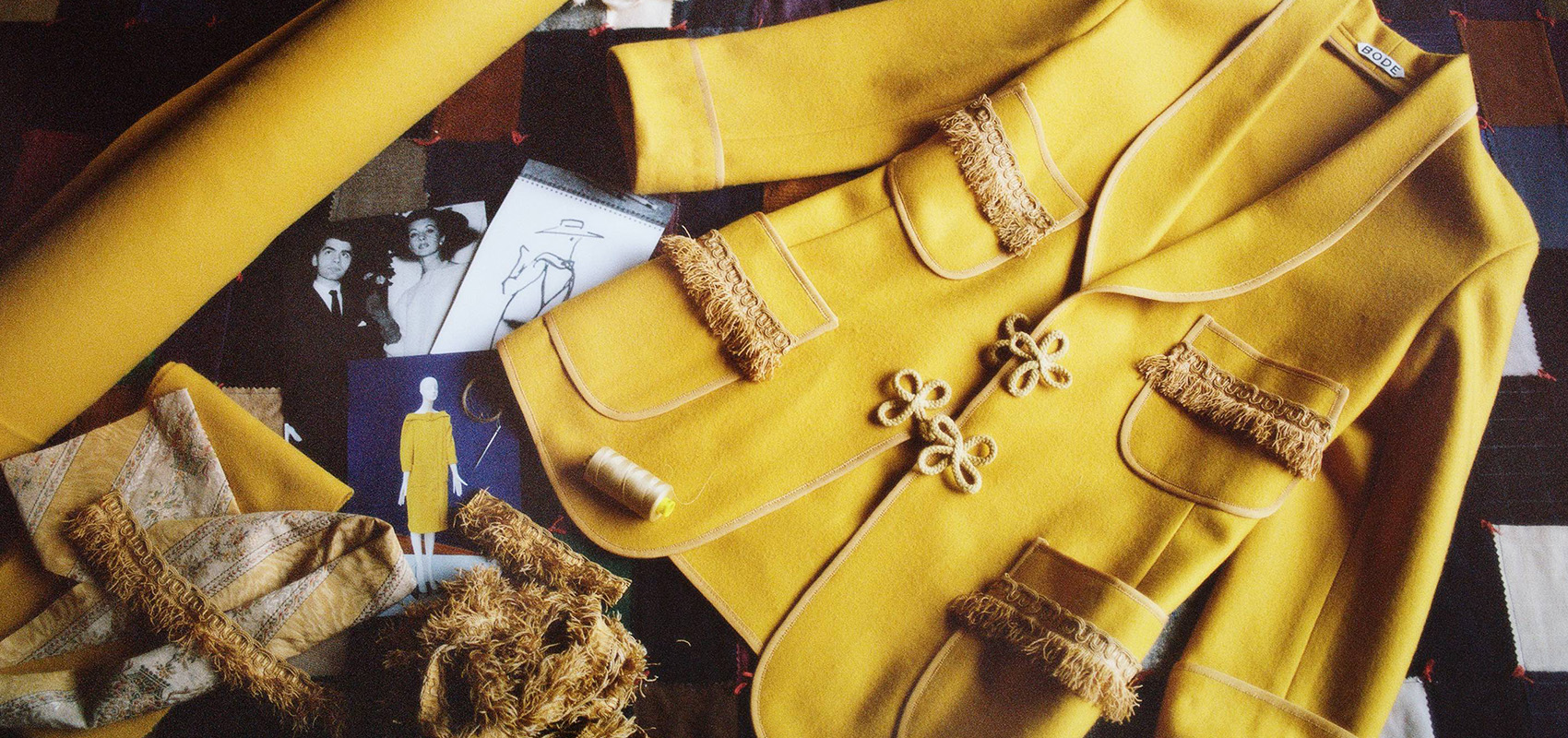Clothing brand Bode paid homage to the late designer by reinterpreting a garment he made as a young man.
The first Monday in May brought with it the annual celebration of fashion and extravagance that is the Met Gala. The exhibit was titled Karl Lagerfeld: A Line of Beauty, which some guests took as the opportunity to dress up as a cat — a nod to his millionaire feline Choupette.
The Gala honored the couturier whose dark sunglasses, ever-present fan, and love for tailoring made him a recognizable fashion icon in the same way as Anna Wintour. One of those figures that, even if you know nothing about fashion, you’ve likely seen before. His superhuman work ethic, forward-looking nature, and voracious appetite for art, literature, and history made him a fashion master whose career spanned over 60 years. (Simultaneously, his opinionated nature has made him a controversial figure whose – at best – callous comments taint his illustrious legacy.)
But before all that, Karl Lagerfeld was a 21-year-old young man who entered the International Wool Secretariat competition, known today as the International Woolmark Prize. His yellow wool button-down coat earned him first place in the coat category in 1954, judged by a panel which included Pierre Balmain and Hubert de Givenchy. This win resulted in a hire by Balmain and sent Lagerfeld down the path he would become famous for.
“The Woolmark prize jumpstarted Karl’s career, much like it did my own.”
Emily Adams Bode Aujla
This is the history that New York-based brand Bode and The Woolmark Company tapped into for the Met Gala, producing a modern reinterpretation of the look which was worn by designer and activist Aurora James. “I can’t believe that we both won a Woolmark Prize 66 years apart, it’s such an honor to be connected to an industry legend through Merino wool,” said Emily Adams Bode Aujla, the designer who won the 2020 Karl Lagerfeld Award for Innovation at the International Woolmark Prize. “Because the Woolmark prize jumpstarted Karl’s career, much like it did my own, I wanted to start with [that] coat,” she explained.
The cocktail coat was made from yellow Merino wool, in a shade as close as possible to the original color. Underneath, the top and skirt were fashioned from a 1910 French domestic textile, not only because “the reuse of antique textiles is the foundation of Bode, but I [also] wanted to pay homage to Karl’s love of interiors and his life and career in France.” (Indeed, he was a known Francophile, and loved to fill his spaces with contemporary art and antiques, from postmodern Memphis furniture to an 18th-century chandelier.)
“Because he wasn’t yet designing for a house or brand, this piece was really personal to him,” mused Bode Aujla. It’s an interesting insight into the designer before he became the infamous Karl we know today. Bode’s creation from Lagerfeld’s nascent career paid tribute to his legacy in a deeper way than the more obvious references that night. Though black and white suiting, strings of pearls, and the signature Chanel camellia are significant, they weren’t all that made Lagerfeld a fashion legend.
All images courtesy of Bode/Getty Images.





